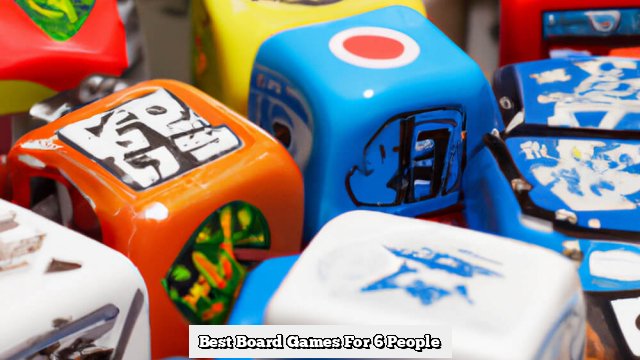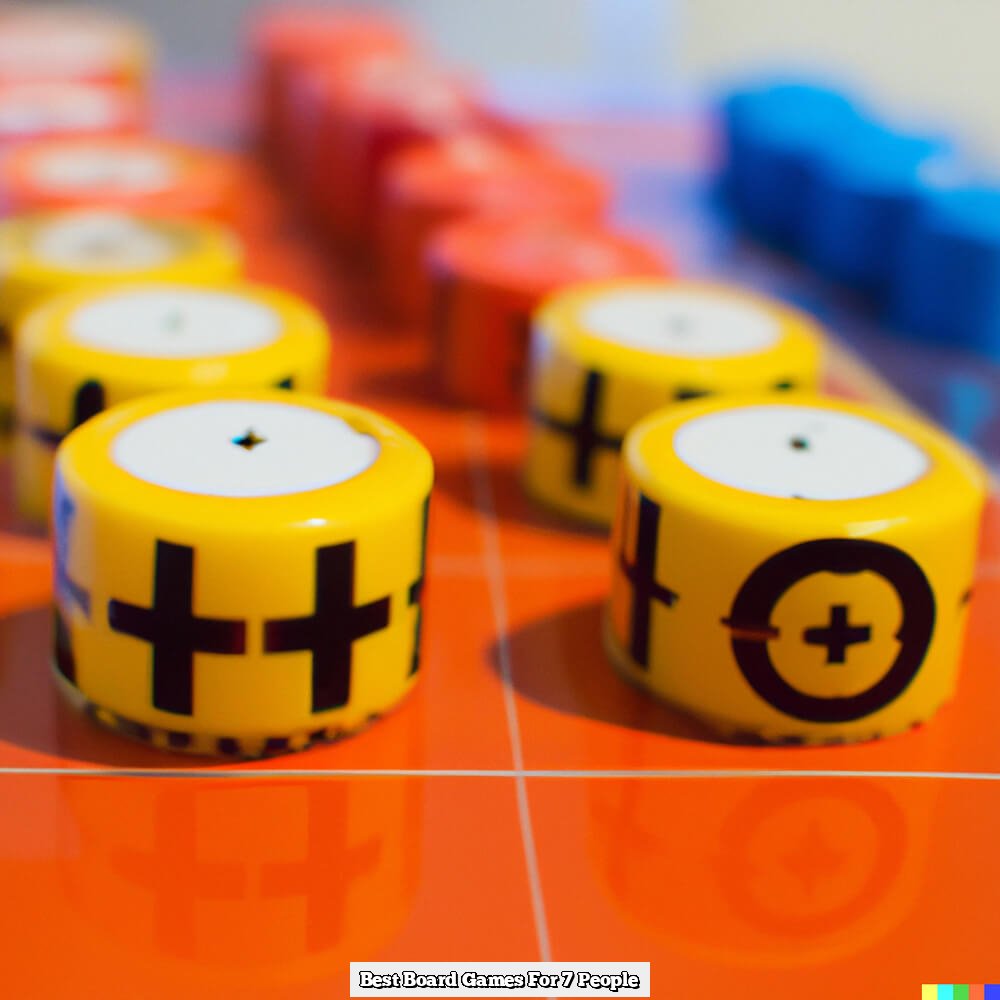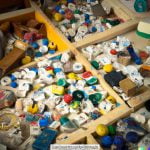Introduction
The history of board games can be traced back to ancient times. Humans have been playing various types of board games for thousands of years. From ancient Egyptian and Roman times to the modern-day, people have enjoyed competing against each other using strategy and skill in order to win. Historically, different parts of the world came up with various kinds of board games based on their culture, geography, and history.
Invention Process: How People Invent Board Games
The invention process for creating a new board game starts with an idea or concept. This usually begins from brainstorming sessions where the creator considers different motivations or themes that could be used in the game. During these sessions ideas such as setting, characters and rules are explored. After initial creative concepts are established, mechanics and game play must be developed. Designers construct prototypes with trial game play sessions that provide feedback on which aspects should be improved upon as well as any changes that should be made to rules or play styles. Through trial and error, more refinements are added until the designers feel they’ve perfected the game. Finally, it goes through testing and production before it is ready to be sold commercially.
The Invention Process
1. Formulate the idea: The first step in inventing a board game is to have a good idea. Think about what type of concept would be entertaining and engaging for people playing the game. Brainstorm ideas, consider creative themes, and research existing board games that may offer some inspiration.
2. Design the basics of the game: Once an idea has been decided on, start establishing how the game works, who will play it and how long it will last. Consider aspects like interaction between players, chances of winning and losing, levels of difficulty, rules and objectives.
3. Create a prototype and playtest: Start refining your idea by hand with paper, card or simple materials that can help you make decisions about mechanics of the game such as turn order or rewards and punishments for different actions taken within the game. This process usually involves trying out several versions with family or friends until they come up with one that works as intended.
4. Refine components: Run some additional tests with updated prototypes to fine-tune minor issues such as player balance towards victory or fairness for specific strategies within the game ruleset. This stage is often essential to lend credibility to any future production runs where criticism may arise from any unbalanced functions not considered during this phase
5. Publish your finished work: After finalized components have been tested successfully you should now be ready to release your boardgame design into the public domain either through physical stores or digital channels such as internet retailers or popular platforms like Kickstarter or Amazon’s Gamezone
Ideas Generation
The first step in inventing a board game is to come up with an idea. This could involve researching popular board games and seeing what different experiences appealed to the public previously, or having brainstorming sessions between friends and family to explore new avenues for a game of one’s own. Mind mapping can also be beneficial in capturing ideas swiftly while they’re fresh in a person’s mind.
Game Concept: Overview, Theme and Mechanics
Once an idea is established, one must then begin to develop the concept of the game through considering its main overview, theme, and mechanics. Establishing each element helps set where players will go during the game, how they get there, and whether themes are relevant to keep their attention fully invested in the experience. Creating a short statement that captures the nature of these three core elements can be especially helpful when looking at quickly summarizing the game as a whole assessment.
Prototyping: Graphic Design & Construction
When it comes to producing a board-game prototype from paper materials such as cardstock or foam board, graphic design skill will come into play in ensuring all dimensions fit together properly on any sized table. One can construct detailed maps using miniature figurines for character demonstration purposes before physical pieces such as dice and cards need to be acquired (originally by hand or purchased). Finally, testing out several rounds of gameplay gives an inventor an idea of how fast or slow-paced action should be with particular groups of players.
Crafting The Game
Before inventors can create a board game, they need to first come up with an idea. They then craft the mechanics behind the game and decide upon the number of players that it can accommodate. The inventor may draw a physical prototype of the game, or create a virtual model on their computer. Once they have a framework, they need to devise the rules and objectives that are necessary for gameplay.
The next step in inventing a board game is play testing. This helps people spot any potential issues and can even lead to changes in the overall design of the game. Inventors will usually bring on test groups or hire people who are willing to play their prototype over multiple sessions. This way, such groups can provide feedback and insight about what works and what does not when playing their board game.
Finally, once play testing is complete and all improvements have been made; inventors must finalize all aspects of their creation including artwork and written rules. At this point, some may choose to seek out venture capitalists or major publishers for funding – though it’s also possible for video sharing platforms such as YouTube and Twitch to offer exposure as well. Either way, once everything is fully complete, inventors have successfully invented their very own board game!
Manufacturing and Distribution
People invent board games by first conceptualizing the game idea, then designing it with a focus on fun and a unique playing experience. Usually, game designers start by writing a design document outlining the main concepts of the game including playing rules, components, and overall mechanics. After that, they develop prototypes to test their ideas and observe how players interact with them. Once satisfied with the results, they begin to illustrate artwork and create graphics for the components of their board games before starting production.
In order to bring their board game invention to market, inventors must decide which manufacturing method to use; either self-publish or utilize a publisher. If self-publishing is chosen, game creators will usually have purchase a minimum quantity of boards from manufacturers who specialise in providing services such as cutting cardboard pieces and printing art onto paper items. Then packaging materials must be sourced as well as other marketing materials like banners and posters for advertisement purposes. Finally inventors will need to approach distribution outlets for placement in stores or acquiring third-party fulfillment services if selling through online storefronts.
Bringing the Game to Market
Inventing a board game is only the beginning of the process. After successfully creating what may be an entertaining product, it must then be taken to market”made available to those who can provide feedback, financial backing, and ultimately decide whether or not they want to purchase the game. This can involve personal demonstrations with potential buyers, as well as marketing campaigns targeting specific demographics. The journey should also be documented through images and video in order to maintain a record of the game’s development and spread awareness on social media or other platforms.
To get started on this process, inventors must often build a proof-of-concept prototype for the board game which is then demoed to potential investors and buyers. It’s important that the prototype capture the essence of their full vision for the game; this means including rules, different play modes, plenty of components (cards, dice, custom tokens/stretch goals/etc.), professional graphics/layout/etc., possibly even retail packaging. In order to do this properly and attract interest from parties who may help bring it to market fully realized, it is important for inventors to consider necessary licenses such as trademarks and patents that protect their creation both domestically and internationally. Additionally, seeking legal assistance should occur prior to seeking backers; these agreements will need careful wording in order to benefit all involved in marketing the game in a cost-effective manner. Finally, having accurate data related to initial orders is critical so that each party understands how much will be earned/saved by participating in any given agreement with no surprises down the road.
Tips and Tricks for Building an Awesome Board Game
1. Start by creating the game’s concept: The concept is the basis of your game. It sets the scope, premise and tone of the game. This could be a card game, a strategy game or a social deduction game like Werewolves among us. Gather all your ideas on paper before you begin prototype-building for the board or cards.
2. Establish a theme: Any great board game should transport players to another world through its theme. Develop an original and exciting theme to capture both novice and hardcore gamers alike! When it comes to themes, draw inspiration from classic stories, cinema, heroes and villains, history or the imagination!
3. Define win conditions: These are critical elements you should define when conceptualizing your design. Will it be Players vs Players? Players vs Environment? how will people achieve victory in terms of turns, points or other means?
4. Establish a setting: This is where you visualize playing surfaces for your board such as mountains, forests or beach scene locations for battles (depending on the context of your design).
Grids often used for finite purposes such as motion paths or movement during play on miniatures associated with particular tiles are also acceptable designs for settings that give interesting dimensions to single large scale map boards focus on backgrounds of environments rather than limits and small scale tile pieces .
5. Rules and objectives: Draft out rules & objectives clearly so they make sense across various levels relevant to ages yet engaging enough fo adults certainly if that is one of your product objectives. Gradually refine rules/objectives till they are easy to understand both rigidly & flexibly as possible without losing authenticity in translations into subsequent steps namely graphics/illustrations & asset designs..
6. Test it: Pull together friends and family who love games to get feedback putting aside stubbornness take note of any areas where you can improve craft your masterpiece considerably further by testing building better mechanics fit into existing /new frameworks and do some more research tailoring them further without ever compromising quality
Conclusion
Once the inventor has come up with an idea for their game, they will need to research and develop further. This could involve researching existing games in the genre that already exist, making physical prototypes by hand before moving on to more professional versions and investing in professional services such as graphic design and manufacturing. The inventor will likely also have to acquire licensing rights and any other required permits or legal requirements before they can release the game. If a publisher is interested in their game, it may be beneficial to enter into negotiations with them regarding potential future sales once the game is completed and ready for market. Finally, inventing a board game can require extensive marketing efforts in order to help players discover the new product and make it stand out from others in its genre. With determination and commitment from start to finish, an inventive individual can create a successful board game that will bring hours of joy to households around the world!

I love playing all kinds of games – from classics like Monopoly to modern favourites like Ticket to Ride.
I created this blog as a way to share my love of board games with others, and provide information on the latest releases and news in the industry.





